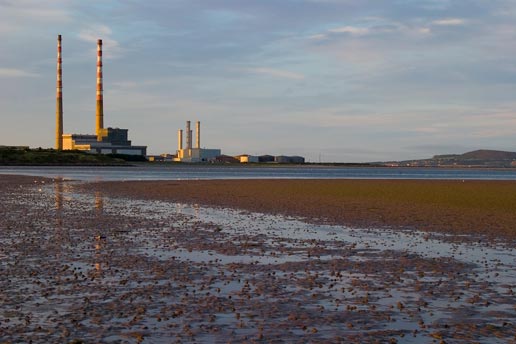
While the United States lags in developing a broad-based climate policy, the nation’s carbon emissions reached a 20-year low this year. Many have attributed some of that drop to a booming supply of low-carbon natural gas, of which the United States is the world’s largest producer. But does natural gas — and specifically the quickly developing production of shale gas — create other emissions, such as methane, that could be just as harmful? A new study by MIT researchers shows the amount of methane emissions caused by shale gas production has been largely exaggerated.
“While increased efforts need to be made to reduce emissions from the gas industry overall, the production of shale gas has not significantly increased total emissions from the sector,” says Francis O’Sullivan, a researcher at the MIT Energy Initiative and the lead author of the study released this week in Environmental Research Letters.
The research comes amidst several other reports on the impact of “fugitive” methane emissions — gas leaked or purposefully vented during and immediately after the stage of shale gas production known as hydraulic fracturing. While many of these reports studied the amount of potential emissions associated with the hydraulic fracturing process, the MIT researchers stress that this is only part of the puzzle. Consideration must also be given to how this gas is handled at the drilling sites, the study shows.
“It’s unrealistic to assume all potential emissions are vented,” O’Sullivan says. “Not least because some states have regulations requiring flaring as a minimum gas-handling method.”
Sergey Paltsev, the study’s co-author and the assistant director for economic research at the MIT Joint Program on the Science and Policy of Global Change, says companies also have an economic reason for wanting to capture this “fugitive” gas.
“When companies vent and flare methane they are losing gas that they could have captured and sold,” Paltsev says. “When we compared the cost of installing the right equipment to capture this gas to the loss in revenue if it isn’t captured, we found that the majority of shale wells make money by capturing the potential ‘fugitive’ emissions.”
In talking with industry representatives and officials at the U.S. Environmental Protection Agency (EPA), O’Sullivan and Paltsev found that companies are already capturing about 70 percent of potential “fugitive” emissions. In factoring that into their analysis, the researchers find emissions from shale gas production to be strikingly lower than previous estimates of potential emissions.
Their analysis was based on data from each of the approximately 4,000 wells drilled in the five main U.S. shale drilling sites during 2010. Wells in two of those sites, Texas’ Barnett shale and the Haynesville shale on the Texas-Louisiana boarder, had been studied by Robert Howarth from Cornell University last year when he looked at potential emissions released by the industry. His study garnered much attention because it claimed the greenhouse gas footprint of shale gas was larger than that of conventional gas, oil, and, over a 20-year time frame, coal. That study, however, used very limited well datasets.
In studying potential emissions, Howarth found 252 Mg of methane emissions per well in the Barnett site and 4,638 Mg per well in the Haynesville site. The MIT researchers, using their comprehensive well dataset, found that the potential emissions per well in the Barnett and Haynesville sites were in fact 273 Mg and 1,177 Mg, respectively. When accounting for actual gas handling field practices, these emissions estimates were reduced to about 35 Mg per well of methane from an average Barnett well and 151 Mg from an average Haynesville well.
According to Adam Brandt, an assistant professor at Stanford University, this analysis “provides an important contribution to the literature by greatly improving our understanding of potential shale gas emissions using a very large dataset.”
Brandt says, “Previous studies used much smaller and more uncertain datasets, while O’Sullivan and Paltsev have gathered a much larger and more comprehensive industry dataset. This significantly reduces the uncertainty associated with potential emissions from shale gas development.”
A U.S. Department of Energy study released in August confirmed that while electricity generated by gas produces half the emissions of coal generation, natural gas production does make up 3 percent of the nation’s total emissions. While the overall benefits far outweigh the small increases during production, Paltsev believes the EPA’s efforts to reduce those emissions through new air quality standards are a “step in the right direction.”